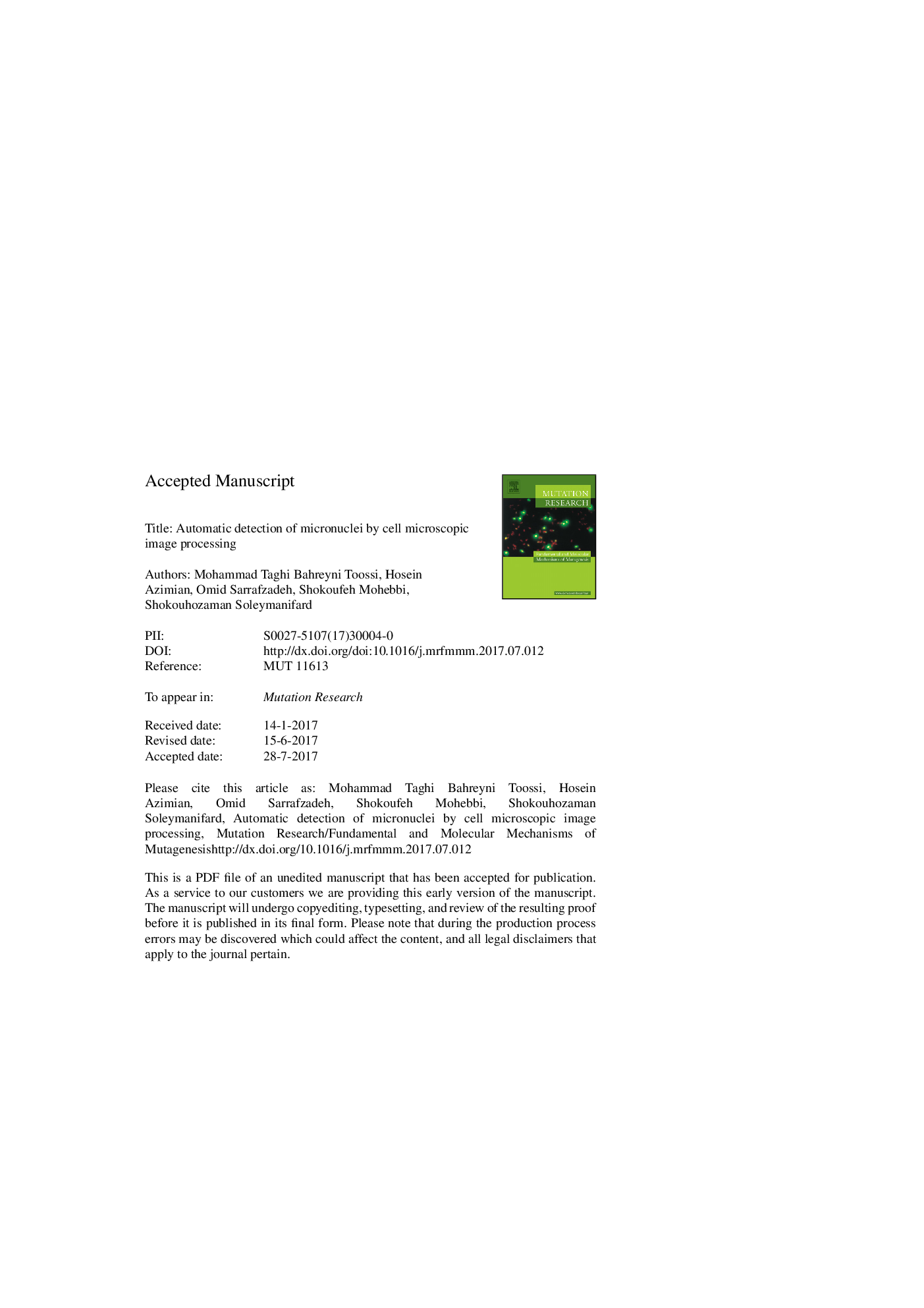ترجمه فارسی عنوان مقاله
تشخیص خودکار میکروسکوپی توسط پردازش تصویر میکروسکوپی سلولی
عنوان انگلیسی
Automatic detection of micronuclei by cell microscopic image processing
| کد مقاله | سال انتشار | تعداد صفحات مقاله انگلیسی |
|---|---|---|
| 152305 | 2017 | 28 صفحه PDF |
منبع

Publisher : Elsevier - Science Direct (الزویر - ساینس دایرکت)
Journal : Mutation Research/Fundamental and Molecular Mechanisms of Mutagenesis, Volume 806, December 2017, Pages 9-18
ترجمه کلمات کلیدی
آزمون میکروسکوپی، تجزیه و تحلیل سیتوژنتیک، تابش یونیزه، پردازش تصویر، تقسیم بندی تصویر، سیستم طراحی کامپیوتری،
کلمات کلیدی انگلیسی
Micronucleus test; Cytogenetic analysis; Ionizing radiation; Image processing; Image segmentation; Computer-aided-design system;

